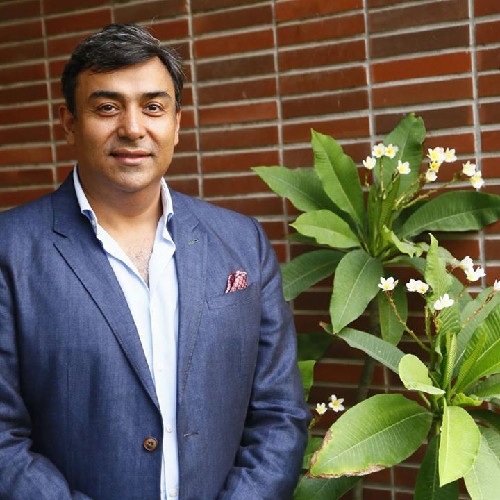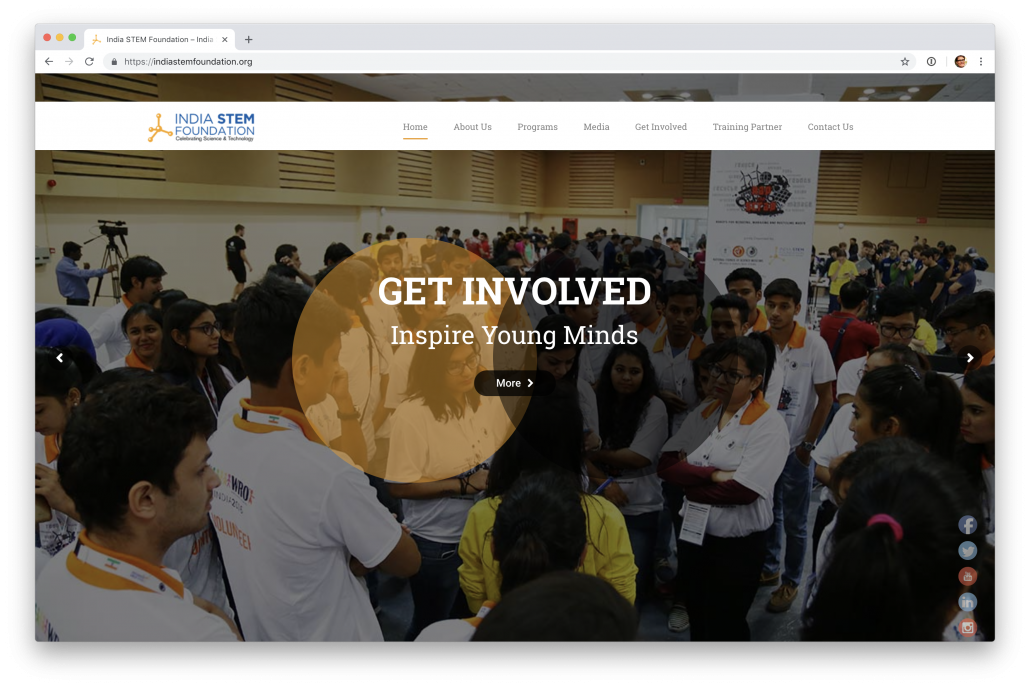India STEM Foundation – The First of Its Kind, connecting young minds around the world
The India STEM Foundation was born in a journey to bridge the gap of scientific skills between students in India and those in technologically advanced countries. At the root of this organization is Sudhanshu Sharma, a visionary determined to bring young scientists around the world closer to each other.
An email interview with him and the program manager, Nityanand Channur, gave us an insight into their goals as the first STEM foundation in India. This article is a part of our current theme ”Kids & Science”.

Nityanand Channur is the Program Manager at India STEM Foundation.
Hi Mr. Channur! So, India STEM foundation aims at encouraging young children to involve themselves in science and technology and pursue it as a career. What inspired/drove you to start this foundation?
Our Founder-Director, Mr. Sudhanshu Sharma used to frequent countries like Japan, Korea etc. for providing turn-key machine tool/automation solutions to leading organizations in India. He was surprised to see the skills gap among skilled resources in India and those countries.
While he was trying to understand/explore a possible reason for this gap, he came across a program ‘World Robot Olympiad’ where children as young as 9 were working in teams to build, program and test machines/system that solved specific tasks. This experience made it clear to him that having a hands-on exposure to learning by doing right at an early age has a long-term impact on children’s lives. This made him start speaking to schools to develop hands-on STEM & robotics labs and organize programs like World Robot Olympiad to give students that learning by doing opportunities.

Sudhanshu Sharma, Founder-Director of India STEM Foundation.
Though started as a hobby, Sudhanshu could envision the need of multiple stakeholders (schools, parents, corporates, government bodies etc.) and to align all of them to this objective of providing hands-on STEM experience to children, India STEM Foundation came into existence. In one line, our intent is to encourage students to become ‘problem solvers’ and science & technology, robotics etc. are just those attractive interventions to engage them in this fun-filled problem-solving journey.
The Indian education system is very strongly based on rote learning and competitive score-based assessments. Do you think this needs to be changed and replaced with more holistic learning? How do you think India Stem Foundation
There is definitely a need of holistic learning approach in our education system and slowly all the stakeholders involved in the education system have started to incorporate changes that attempts to include hands-on minds-on practices along with regular academics. The wave of change would not be possible by just ISF; it needs collaborative involvement and decisions by other stakeholders, especially government bodies.
However, in comparison to our initial days when STEM only meant stem cells, we have seen growing interest/awareness in implementing hands-on science & technology based education interventions at school levels and STEM being recognized as Science, Technology, Engineering, and Mathematics.
The target audience of your foundation is the younger generation, the school going students. At what developmental stage do you think students are most easily convinced about their career? It sometimes proves to be difficult to interact with young students about their careers – what do you believe is the most effective way of getting across your message to them?
This is a continuous development process and pointing out a specific age or a grade to talk about careers is difficult. We shall focus on interventions/approaches (STEM labs, seminars by leaders from diverse backgrounds, counseling etc.) that aim to provide holistic career possibilities so that they are able to understand future career outlook.
In India, we see a huge percentage of people equate STEM to engineering only, hence the barrage of students applying for engineering colleges. How do you intend to steer them away from mainstream computer engineering to other forms of engineering or the other fields in STEM – such as mathematics or biophysics?
The approach mentioned for the above question answers this; our approach is never to emphasize on a specific degree or stream, but rather help the students become problem solvers and encourage them to choose a career that excites their interest. We do happen to interact with student participants at our programs and we have noticed that they are involving themselves in this learning-by-doing journey, not with any specific intention of becoming a computer engineer or so. Their future interests are indeed touching many streams (surgery to social service) apart from engineering.
What do you think is the future for India STEM foundation – how far do you want to spread its wings?
We would like to stick to our vision of developing this culture of hands-on learning for students at an early age with varied STEM interventions and would keep ourselves open for all collaborations wherever we can make an impact.

Learn more at India STEM Foundation
- The Art of Scientific Performance: Science Busking with David Price - March 4, 2020
- Denialism Attitudes and How to Approach Them – an interview with Christopher Swingle - September 12, 2019
- #BetterPoster: The New Minimalism Act - June 29, 2019
- Writing Poetry for Engineers – Behind the Scenes - May 23, 2019
- Conversations about Conservation: Simon Watt and The Ugly Animal Preservation Society - December 22, 2018
- India STEM Foundation – The First of Its Kind, connecting young minds around the world - October 25, 2018





Your blog is really very nice, informative and thorough. I read the blogs each time they are sent. Now i will share some more information about the STEM education below:-
Visit here:- https://tinker.ly/